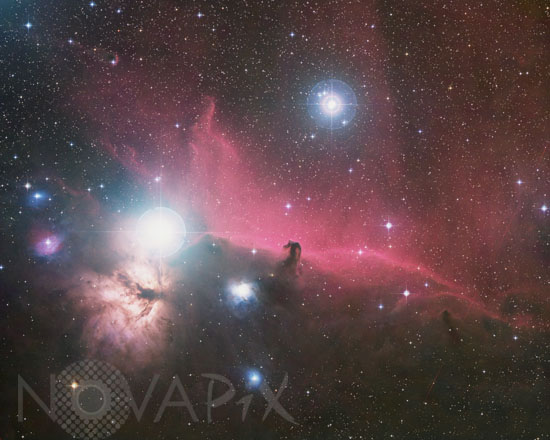Photo Agency - Astronomy - Space - Nature

Horsehead nebula in Orion
author: Anglo-Australian Observatory/David Malin Images/Novapix
reference: a-nec04-34019
Image Size 300 DPI: 51 * 40 cm
This distinctive red emission nebula (IC 434) is the result of radiation from sigma Orionis interacting with the surface of a dusty cloud of gas from which projects the dark shape of the head of a horse. Sigma is the second brightest star in the picture and is at about the same distance from the Sun as the nebula. The brightest star here is zeta Orionis, easily visible to the unaided eye as the easternmost star in the line of three which form Orion's Belt. Alnitak (Zeta Orionis) is a supergiant star with a brightness 35,000 times greater than the Sun. Its mass is 20 times the solar mass. Partly obscured by the glare of zeta is the curious yellowish nebula NGC 2024, whose energy comes from stars hidden in the dark lane, while other nebulae simply reflect the light of embedded hot stars and appear blue. All these objects are about 1500 light years distant.
This photograph was produced by combining three separate photographs taken with the 1.2m UK Schmidt Telescope through different coloured filters.
This photograph was produced by combining three separate photographs taken with the 1.2m UK Schmidt Telescope through different coloured filters.
Contact : Stéphane Aubin +33-(0)9-51-26-53-76
© Novapix - All rights reserved


